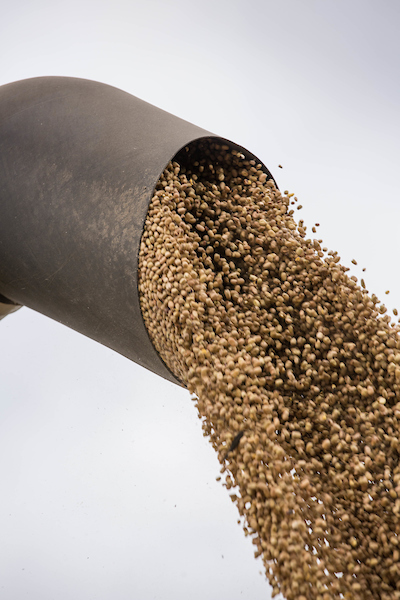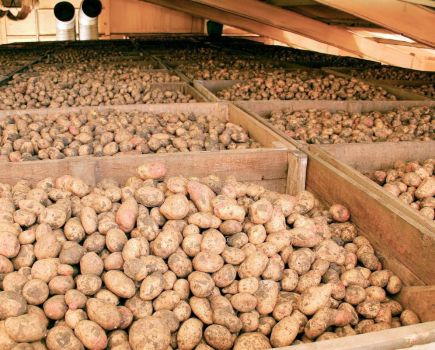
It is clear that the 2018 bean crop is of generally lower quality in terms of visual appearance. Grain size is generally smaller or particularly variable and especially in the south has been more severely affected by bruchid damage than is previous seasons.
The effect of this on seed quality has also been negative, and this is being seen in the PGRO seed laboratory. It underlines the importance of seed being tested for germination capacity and vigour ahead of sowing for the new season.
Seed testing farm saved seed
If saving seed on-farm, it is important to test seed for germination capacity and seed-borne pests and diseases. Germination can be affected by physical damage to the seed caused when harvesting over-dry crops, chemical contamination by glyphosate, or insect damage such as bruchid damage.
At low levels of bruchid infestation, germination losses may not be significant in larger seeded varieties, although damaged beans can be more susceptible to moulds. It is likely that lightly infested seeds have a greater chance of survival, with the size of seed and portion remaining following larval feeding being important determinants of germination capacity.
At high levels of seed damage by bruchid, germination is affected, and losses of between 10 and 15% germination have been recorded in laboratory tests when bruchid damage is between 40% and 80%. There is potential in the field for the damage to cause seeds to decay before germination occurs, and damage close to the point of attachment with the hypocotyl can cause establishment failure. This occurs more frequently when bruchid damage levels are high.
Crops that are harvested at low moisture content, particularly when less than 12%, may incur mechanical damage during harvesting or cleaning. Mechanical damage to seed causes seedling abnormalities and increased infection by soil-borne pathogens such as damping off (Pythium spp.), lowering the germination capacity.
If glyphosate has been used as a desiccant, seedling abnormalities are likely to arise if the seed from the treated crop is used.
Seed-borne pests, diseases and disorders should be checked before use and include the following:
Field beans
Stem and bulb nematode (seed and soil-borne)
Ascochyta fabae
Combining peas
Ascochyta complex (leaf and pod spot)
Marsh spot (caused by manganese deficiency)
Vining peas
Ascochyta complex (leaf and pod spot)
Marsh spot (caused by manganese deficiency)
Electrical conductivity (vigour)
Other tests for peas include seed-borne bacterial and viral diseases.
Germination and vigour tests are available for green beans and other crops. It also is a good idea to have a thousand seed weight test carried out to help determine seed rate per hectare.
The rules for farm saved seed
There are several rules that apply to farm saved seed (FSS):
– Farmers are legally obliged to declare their use of FSS and pay for the use of eligible varieties;
– FSS must be produced and saved within a farmer’s own business (i.e. land farmed as the same business), and farmers cannot sell, buy, barter or otherwise transfer FSS outside their own holding;
– FSS rules apply whether seed has been processed or taken straight from the barn;
– Seed from hybrid varieties may not be farm-saved without the breeders’ permission.
See https://www.gov.uk/guidance/farm-saved-seed for further details.




